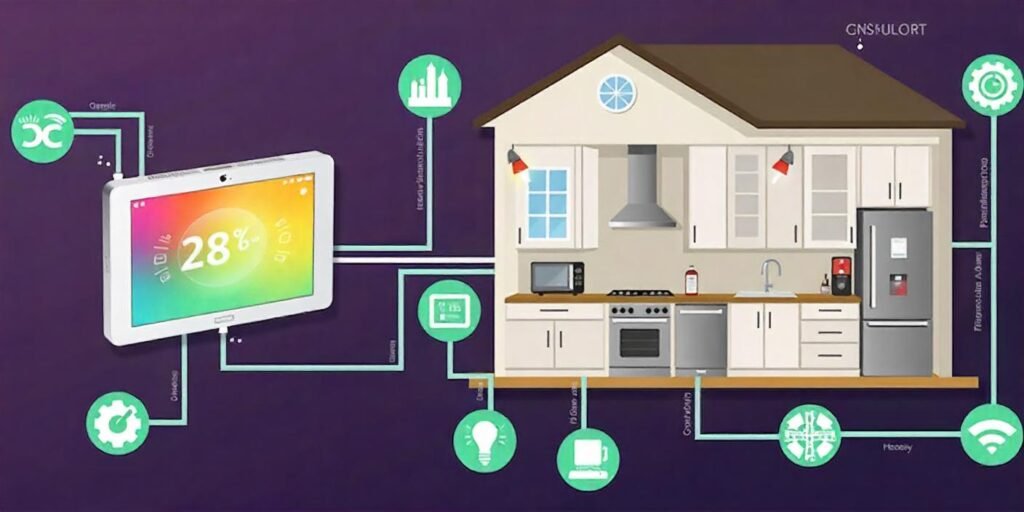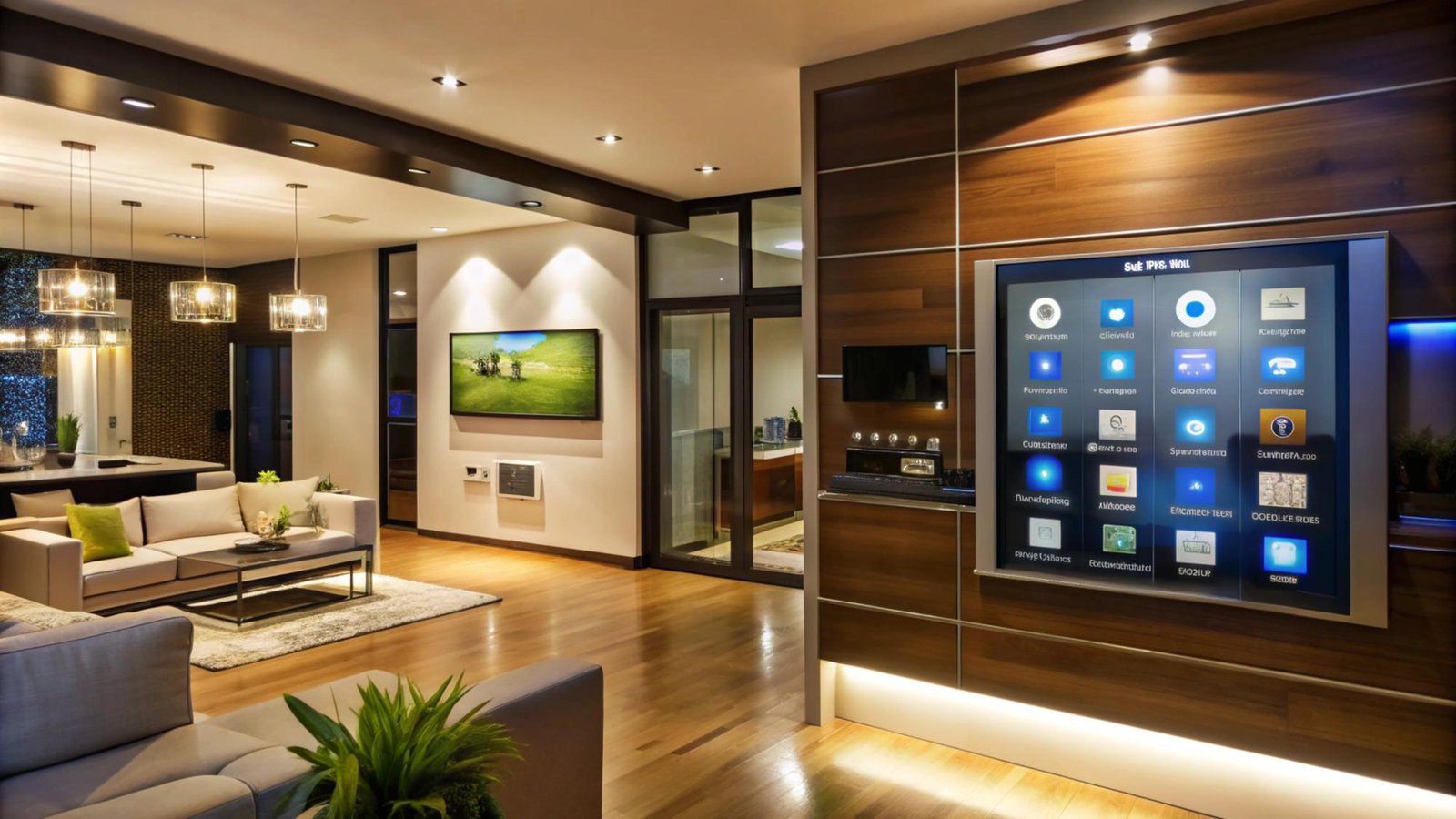What Are Smart Homes and How Do They Work?
A smart home is a house equipped with modern technology that makes life easier, safer, and more efficient. In a smart home, devices like lights, thermostats, security cameras, and appliances are connected to the internet and can be controlled remotely or automatically. This is made possible by the Internet of Things (IoT), which allows these devices to communicate with each other and work seamlessly together. You can manage them using a smartphone app, a central hub, or voice assistants like Alexa or Google Assistant.
How Smart Homes Are Changing Our Lives
Smart homes aim to make daily life more convenient and efficient while enhancing security. With the help of artificial intelligence (AI) and machine learning, these homes are changing from simple automated systems to intelligent spaces that adapt to your habits and preferences. By collecting data from sensors and analyzing it, smart homes can learn your routines and provide a personalized living experience.
Key Components of a Smart Home
Smart Devices
These include gadgets like smart lights, thermostats, door locks, cameras, and appliances that you can control remotely or automate to work on their own.
Connectivity
Smart devices use technologies like Wi-Fi, Bluetooth, or Zigbee to stay connected and communicate with each other.
Control Interfaces
You can control smart home devices using apps, centralized hubs, or voice assistants like Amazon Alexa, Google Assistant, or Apple Siri.
Automation
Devices can be programmed to perform tasks automatically, such as adjusting the thermostat when you leave the house or turning off lights when no one is in the room.
How Do Smart Homes Work?
Data Collection
Sensors in smart devices collect information like temperature, motion, or voice commands.
Communication
Devices share this data over a network, usually through a central hub or app.
Commands and Actions
You can issue commands through a voice assistant or app, such as asking your smart speaker to turn on the lights. The system processes these commands and carries them out.
Automation
Smart homes use pre-set rules or AI learning to perform tasks automatically, like locking the doors at night or watering the garden when the soil is dry.
By creating this interconnected ecosystem, smart homes offer an efficient and stress-free way to manage your living environment.
How Smart Home Devices Simplify Daily Life

Enhanced Convenience
Smart homes are designed to make daily tasks easier.
Voice Assistants
Devices like Alexa, Google Assistant, and Siri let you control your home hands-free. You can play music, set reminders, or even adjust the thermostat with simple voice commands.
Smart Lighting
Lights can be turned on/off or dimmed with your smartphone or voice. Automated schedules ensure lights are on when needed, like when you enter a room or at sunset.
Smart Appliances
Appliances like refrigerators, ovens, and washing machines can send reminders or be controlled remotely, making household chores more manageable.
Manage your smart home with google
Improved Energy Efficiency
Smart homes help save energy and lower utility bills by optimizing how devices are used.
Smart Thermostats
Devices like Nest and Ecobee adjust heating and cooling based on your schedule, avoiding energy waste.
Smart Plugs and Power Strips
These monitor energy usage and turn off appliances when not in use, reducing unnecessary power consumption.
Automated Shades
Smart blinds adjust to natural light levels, reducing the need for artificial lighting and keeping the home at a comfortable temperature.
Strengthened Security and Safety
Smart homes provide peace of mind by enhancing security features.
Smart Locks
These allow you to lock or unlock doors remotely, track who enters your home, and grant temporary access to guests.
Surveillance Cameras
Smart cameras offer live feeds, motion alerts, and cloud storage, letting you keep an eye on your home from anywhere.
Smoke and Carbon Monoxide Detectors
These connected devices send alerts to your phone in case of an emergency, ensuring quick action.
Simplified Daily Routines
Robot Vacuums
Devices like Roomba clean your floors without you lifting a finger.
Smart Irrigation Systems
These water your garden automatically based on weather conditions, keeping it healthy with minimal effort.
Personalized Morning Routines
Smart systems can sync devices to gradually turn on lights, brew coffee, and update you on the weather, creating a seamless start to your day.
Remote Monitoring and Control
Smart homes let you stay connected even when you’re away.
Centralized Apps
Manage and monitor all your devices from a single app, giving you control from anywhere.
Geofencing
Some devices use your phone’s location to trigger actions, like turning off lights or locking doors when you leave.
Entertainment and Lifestyle
Smart homes also enhance how we relax and enjoy life.
Smart TVs and Streaming Devices
These integrate with voice assistants, giving you easy access to movies, music, and games.
Multi-Room Audio Systems
Smart speakers allow you to play synchronized music throughout the house or customize zones for different moods.
Health and Wellness
Devices like smart air purifiers, fitness trackers, and scales promote a healthier lifestyle.
The Future of Smart Homes
Smart home technology is constantly evolving. As AI and machine learning improve, homes will become even more intelligent, adapting to your lifestyle and preferences in real-time. These advancements aim to save time, reduce stress, and make life more enjoyable by automating routine tasks and creating a living environment that’s efficient, secure, and comfortable.
With smart home devices becoming more accessible, homeowners can look forward to a future where managing their home is simpler and more personalized than ever before.


Nice